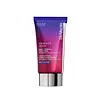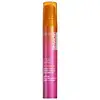What's inside
What's inside
 Key Ingredients
Key Ingredients

 Benefits
Benefits

 Concerns
Concerns

 Ingredients Side-by-side
Ingredients Side-by-side

Water
Skin ConditioningTrimethylolpropane Tricaprylate/Tricaprate
EmollientCaprylic/Capric/Myristic/Stearic Triglyceride
EmollientCaprylic/Capric Triglyceride
MaskingGlycerin
HumectantMyristyl Nicotinate
Skin ConditioningDimethicone
EmollientCetearyl Alcohol
EmollientBis-Stearyl Dimethicone
EmollientPentaerythrityl Distearate
EmulsifyingAloe Barbadensis Leaf Juice
Skin ConditioningIsosorbide Dicaprylate
Skin ConditioningHydrogenated Ethylhexyl Olivate
EmollientGlyceryl Stearate
EmollientStearoxymethicone/Dimethicone Copolymer
EmollientCetyl Palmitate
Emollient1,2-Hexanediol
Skin ConditioningRetinal
Skin ConditioningRetinol
Skin ConditioningBidens Pilosa Extract
HumectantAcetyl Hexapeptide-8
HumectantBeta-Glucan
Skin ConditioningAvena Sativa Kernel Extract
AbrasiveOryza Sativa Bran Extract
Skin ConditioningGlycine Soja Seed Extract
Skin ConditioningAstrocaryum Murumuru Seed Butter
EmollientGossypium Herbaceum Seed Oil
Skin ConditioningButyrospermum Parkii Butter
Skin ConditioningHelianthus Annuus Extract
EmollientHydrogenated Olive Oil Unsaponifiables
EmollientLinum Usitatissimum Seed Oil
PerfumingRosmarinus Officinalis Leaf Extract
AntimicrobialBacillus/Sea Salt Ferment Filtrate
Skin ConditioningSalix Alba Bark Extract
AstringentAdenosine
Skin ConditioningSodium Hyaluronate
HumectantZingiber Officinale Root Extract
MaskingHydroxyethyl Acrylate/Sodium Acryloyldimethyl Taurate Copolymer
Emulsion StabilisingCeteareth-20
CleansingBisabolol
MaskingPolysorbate 20
EmulsifyingIsohexadecane
EmollientLactic Acid
BufferingMethyl Methacrylate/Glycol Dimethacrylate Crosspolymer
Ascorbic Acid
AntioxidantPropyl Gallate
AntioxidantPEG-40 Stearate
EmulsifyingPolysilicone-11
Sorbitan Isostearate
EmulsifyingPolysorbate 60
EmulsifyingTocopherol
AntioxidantCaprylyl Glycol
EmollientTocopheryl Acetate
AntioxidantPentylene Glycol
Skin ConditioningEthylhexylglycerin
Skin ConditioningXanthan Gum
EmulsifyingResveratrol
AntioxidantDisodium EDTA
Aminomethyl Propanol
BufferingParfum
MaskingBHT
AntioxidantPhenoxyethanol
PreservativePotassium Sorbate
PreservativePhenethyl Alcohol
MaskingCitric Acid
BufferingWater, Trimethylolpropane Tricaprylate/Tricaprate, Caprylic/Capric/Myristic/Stearic Triglyceride, Caprylic/Capric Triglyceride, Glycerin, Myristyl Nicotinate, Dimethicone, Cetearyl Alcohol, Bis-Stearyl Dimethicone, Pentaerythrityl Distearate, Aloe Barbadensis Leaf Juice, Isosorbide Dicaprylate, Hydrogenated Ethylhexyl Olivate, Glyceryl Stearate, Stearoxymethicone/Dimethicone Copolymer, Cetyl Palmitate, 1,2-Hexanediol, Retinal, Retinol, Bidens Pilosa Extract, Acetyl Hexapeptide-8, Beta-Glucan, Avena Sativa Kernel Extract, Oryza Sativa Bran Extract, Glycine Soja Seed Extract, Astrocaryum Murumuru Seed Butter, Gossypium Herbaceum Seed Oil, Butyrospermum Parkii Butter, Helianthus Annuus Extract, Hydrogenated Olive Oil Unsaponifiables, Linum Usitatissimum Seed Oil, Rosmarinus Officinalis Leaf Extract, Bacillus/Sea Salt Ferment Filtrate, Salix Alba Bark Extract, Adenosine, Sodium Hyaluronate, Zingiber Officinale Root Extract, Hydroxyethyl Acrylate/Sodium Acryloyldimethyl Taurate Copolymer, Ceteareth-20, Bisabolol, Polysorbate 20, Isohexadecane, Lactic Acid, Methyl Methacrylate/Glycol Dimethacrylate Crosspolymer, Ascorbic Acid, Propyl Gallate, PEG-40 Stearate, Polysilicone-11, Sorbitan Isostearate, Polysorbate 60, Tocopherol, Caprylyl Glycol, Tocopheryl Acetate, Pentylene Glycol, Ethylhexylglycerin, Xanthan Gum, Resveratrol, Disodium EDTA, Aminomethyl Propanol, Parfum, BHT, Phenoxyethanol, Potassium Sorbate, Phenethyl Alcohol, Citric Acid
Water
Skin ConditioningPropanediol
SolventPolymethylsilsesquioxane
Hexylene Glycol
EmulsifyingSodium Polyacrylate
AbsorbentGlycerin
HumectantDimethyl Isosorbide
SolventPentylene Glycol
Skin ConditioningAminopropyl Ascorbyl Phosphate
AntioxidantPsidium Guajava Leaf Extract
AstringentSaccharomyces Lysate Extract
HumectantJasminum Sambac Flower Extract
MaskingCrataegus Monogyna Flower Extract
Skin ConditioningChrysin
Skin ConditioningN-Hydroxysuccinimide
Skin ConditioningPalmitoyl Tripeptide-1
Skin ConditioningPalmitoyl Tetrapeptide-7
Skin ConditioningAcetyl Hexapeptide-8
HumectantMyristyl Nicotinate
Skin ConditioningAdenosine
Skin ConditioningBacillus/Sea Salt Ferment Filtrate
Skin ConditioningWithania Somnifera Root Extract
Skin ConditioningCamellia Sinensis Leaf Extract
AntimicrobialAstaxanthin
Skin ConditioningAcacia Senegal Gum
MaskingHydrolyzed Rhizobian Gum
Tetrasodium Glutamate Diacetate
Steareth-20
CleansingEthylhexylglycerin
Skin ConditioningPhloretin
AntioxidantCaprylyl Glycol
EmollientZinc PCA
HumectantChlorhexidine Digluconate
AntimicrobialSilica
AbrasiveBiotin
AntiseborrhoeicSodium Citrate
BufferingCitric Acid
BufferingAscorbic Acid
AntioxidantSodium Starch Octenylsuccinate
AbsorbentCyclodextrin
AbsorbentPhenoxyethanol
PreservativeSodium Benzoate
MaskingPotassium Sorbate
PreservativeSodium Hydroxide
BufferingWater, Propanediol, Polymethylsilsesquioxane, Hexylene Glycol, Sodium Polyacrylate, Glycerin, Dimethyl Isosorbide, Pentylene Glycol, Aminopropyl Ascorbyl Phosphate, Psidium Guajava Leaf Extract, Saccharomyces Lysate Extract, Jasminum Sambac Flower Extract, Crataegus Monogyna Flower Extract, Chrysin, N-Hydroxysuccinimide, Palmitoyl Tripeptide-1, Palmitoyl Tetrapeptide-7, Acetyl Hexapeptide-8, Myristyl Nicotinate, Adenosine, Bacillus/Sea Salt Ferment Filtrate, Withania Somnifera Root Extract, Camellia Sinensis Leaf Extract, Astaxanthin, Acacia Senegal Gum, Hydrolyzed Rhizobian Gum, Tetrasodium Glutamate Diacetate, Steareth-20, Ethylhexylglycerin, Phloretin, Caprylyl Glycol, Zinc PCA, Chlorhexidine Digluconate, Silica, Biotin, Sodium Citrate, Citric Acid, Ascorbic Acid, Sodium Starch Octenylsuccinate, Cyclodextrin, Phenoxyethanol, Sodium Benzoate, Potassium Sorbate, Sodium Hydroxide
Ingredients Explained
These ingredients are found in both products.
Ingredients higher up in an ingredient list are typically present in a larger amount.
Acetyl Hexapeptide-8, commonly known as Argireline or Acetyl Hexapeptide-3, is a popular peptide in skincare. It’s often referred to as a “Botox-like” ingredient because it helps reduce muscle movement.
By relaxing these micro-movements, Argireline may help minimize the appearance of fine lines and wrinkles. That said, it’s not as powerful as Botox, and research on its long-term effectiveness is still limited.
Beyond smoothing, Argireline may also support collagen production. Collagen is the protein that helps keep your skin firm, bouncy, and well-hydrated by strengthening the skin barrier.
So while Argireline isn’t a miracle fix, it can be a helpful addition to a routine focused on both prevention and skin health.
Read more about other common types of peptides here:
Learn more about Acetyl Hexapeptide-8Adenosine is in every living organism. It is one of four components in nucleic acids that helps store our DNA.
Adenosine has many benefits when used. These benefits include hydrating the skin, smoothing skin, and reducing wrinkles. Once applied, adenosine increases collagen production. It also helps with improving firmness and tissue repair.
Studies have found adenosine may also help with wound healing.
In skincare products, Adenosine is usually derived from yeast.
Learn more about AdenosineAscorbic Acid is is pure Vitamin C. This form makes up the largest amount of vitamin C found naturally in our skin.
Not only is vitamin C great for your overall health and immune system, it also has plenty of benefits on your skin.
Vitamin C is best used for brightening skin. It improves dark spots, acne scars, and hyperpigmentation. This is because it blocks the process of skin darkening when exposed to UV.
Remember: Vitamin C should not replace sunscreen!
Your skin uses vitamin C to build collagen. Collagen is one key component in having a strong skin barrier and plump skin. Vitamin C also plays a role in regulating collagen, thus making it effective in improving wrinkles and fine lines.
Ascorbic acid shows potent antioxidant activity. As an antioxidant, it helps fight free-radicals. Free-radicals are molecules that may damage your skin cells. These antioxidants also protect skin against UV damage.
The best formulations include Vitamin E and/or ferulic acid. These two ingredients help stabilize and provide a boost in the benefits of ascorbic acid. This is because ascorbic acid becomes unstable when exposed to UV and air. In fact, you can tell your ascorbic acid has oxidized when it turns an orange-yellow color.
Ascorbic acid is generally compatible with other ingredients. However, using ascorbic acid with other active ingredients might cause irritation. Two ingredients: copper ions and benzoyl peroxide, will inactivate ascorbic acid completely.
Read more about other types of Vitamin C:
Foods rich with vitamin C include oranges, strawberries, broccoli, bell peppers, and more. When consuming Vitamin C, your skin receives a portion of the nutrients.
Learn more about Ascorbic AcidBacillus/Sea Salt Ferment Filtrate can be bad for dry skin.
Caprylyl Glycol is a humectant and emollient, meaning it attracts and preserves moisture.
It is a common ingredient in many products, especially those designed to hydrate skin. The primary benefits are retaining moisture, skin softening, and promoting a healthy skin barrier.
Though Caprylyl Glycol is an alcohol derived from fatty acids, it is not the kind that can dry out skin.
This ingredient is also used as a preservative to extend the life of products. It has slight antimicrobial properties.
Learn more about Caprylyl GlycolCitric Acid is an alpha hydroxy acid (AHA) naturally found in citrus fruits like oranges, lemons, and limes.
Like other AHAs, citric acid can exfoliate skin by breaking down the bonds that hold dead skin cells together. This helps reveal smoother and brighter skin underneath.
However, this exfoliating effect only happens at high concentrations (20%) which can be hard to find in cosmetic products.
Due to this, citric acid is usually included in small amounts as a pH adjuster. This helps keep products slightly more acidic and compatible with skin's natural pH.
In skincare formulas, citric acid can:
While it can provide some skin benefits, research shows lactic acid and glycolic acid are generally more effective and less irritating exfoliants.
Most citric acid used in skincare today is made by fermenting sugars (usually from molasses). This synthetic version is identical to the natural citrus form but easier to stabilize and use in formulations.
Read more about some other popular AHA's here:
Learn more about Citric AcidEthylhexylglycerin (we can't pronounce this either) is commonly used as a preservative and skin softener. It is derived from glyceryl.
You might see Ethylhexylglycerin often paired with other preservatives such as phenoxyethanol. Ethylhexylglycerin has been found to increase the effectiveness of these other preservatives.
Glycerin is already naturally found in your skin. It helps moisturize and protect your skin.
A study from 2016 found glycerin to be more effective as a humectant than AHAs and hyaluronic acid.
As a humectant, it helps the skin stay hydrated by pulling moisture to your skin. The low molecular weight of glycerin allows it to pull moisture into the deeper layers of your skin.
Hydrated skin improves your skin barrier; Your skin barrier helps protect against irritants and bacteria.
Glycerin has also been found to have antimicrobial and antiviral properties. Due to these properties, glycerin is often used in wound and burn treatments.
In cosmetics, glycerin is usually derived from plants such as soybean or palm. However, it can also be sourced from animals, such as tallow or animal fat.
This ingredient is organic, colorless, odorless, and non-toxic.
Glycerin is the name for this ingredient in American English. British English uses Glycerol/Glycerine.
Learn more about GlycerinWe don't have a description for Myristyl Nicotinate yet.
Pentylene glycol is typically used within a product to thicken it. It also adds a smooth, soft, and moisturizing feel to the product. It is naturally found in plants such as sugar beets.
The hydrophilic trait of Pentylene Glycol makes it a humectant. As a humectant, Pentylene Glycol helps draw moisture from the air to your skin. This can help keep your skin hydrated.
This property also makes Pentylene Glycol a great texture enhancer. It can also help thicken or stabilize a product.
Pentylene Glycol also acts as a mild preservative and helps to keep a product microbe-free.
Some people may experience mild eye and skin irritation from Pentylene Glycol. We always recommend speaking with a professional about using this ingredient in your routine.
Pentylene Glycol has a low molecular weight and is part of the 1,2-glycol family.
Learn more about Pentylene GlycolPhenoxyethanol is a preservative that has germicide, antimicrobial, and aromatic properties. Studies show that phenoxyethanol can prevent microbial growth. By itself, it has a scent that is similar to that of a rose.
It's often used in formulations along with Caprylyl Glycol to preserve the shelf life of products.
Potassium Sorbate is a preservative used to prevent yeast and mold in products. It is commonly found in both cosmetic and food products.
This ingredient comes from potassium salt derived from sorbic acid. Sorbic acid is a natural antibiotic and effective against fungus.
Both potassium sorbate and sorbic acid can be found in baked goods, cheeses, dried meats, dried fruit, ice cream, pickles, wine, yogurt, and more.
You'll often find this ingredient used with other preservatives.
Learn more about Potassium SorbateWater. It's the most common cosmetic ingredient of all. You'll usually see it at the top of ingredient lists, meaning that it makes up the largest part of the product.
So why is it so popular? Water most often acts as a solvent - this means that it helps dissolve other ingredients into the formulation.
You'll also recognize water as that liquid we all need to stay alive. If you see this, drink a glass of water. Stay hydrated!
Learn more about Water